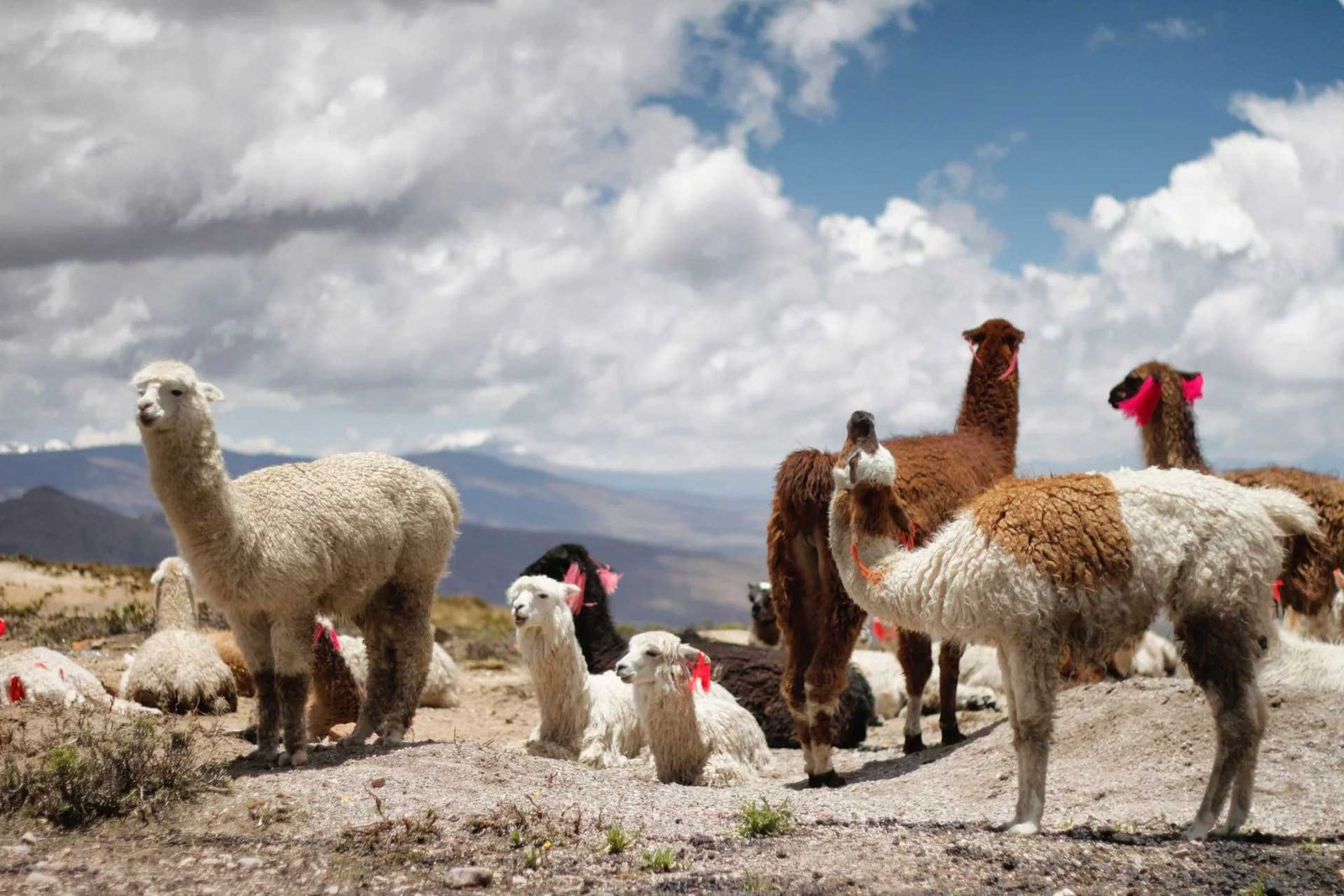Technically speaking, llama fiber is not wool. But many people refer to it as such. A whole fleece consists of two coats: guard hair and down. Guard hair is thick and without crimp, making it excellent for use in rope. Down is soft and luxurious, suitable for finer garments. Using llama wool for knitting requires the selection of the proper type of wool. Because of the broad range of wool types present in the llama population, people are able to make a variety of things from llama wool.

Description
An animal fiber that is similar to alpaca, but less fine and soft.
Llama is a natural animal fiber from the South American camelld family. This fiber similar to alpaca, but is thicker and less premium. Llamas have a double coat: a silky, wavy undercoat and a thicker, coarser outer coat. Generally, llama fibers are shades of brown, but can also contain specks of black and white.
Background
Story
Llamas are native to the Andes Mountains and were domesticated over 5000 years ago. European settlers adopted the name llama (also “lama” or “glama”) from native Peruvians. Their popularity declined between the 11th and 13th centuries when they were selectively bred as load-carrying vehicles, and given the nickname “beasts of burden”. Their rediscovery occurred in the 20th century.
Manufacturing
Llama fiber contains no natural oils or lanolin which also makes it lightweight and it yields 90–93% of its original weight when processed. It shrinks little in washing. Many natural colors can be found, ranging from white, light brown, dusty rose, dark brown, gray and silver, all the way to black.

Expertises
Characteristic
- Lightweight, hallow hair
- Soft and fine
- Straighter than most animal fibers
- Durable
- Difficult to process due to the diversity of fiber thickness
- Less elastic than alpaca fiber
- Weakens under continuous sunlight
- Oil and chemical resistant
- Hypoallergenic
- Shrinks easily and loses shapes when wet
Types of Llama Fiber
Llamas have no formal breed classification except by the fiber they produce. There are two types, three types, or four type names, depending on where you research or with whom you speak. For instance, llamas in the two-category type are identified as ones with coarse fleece, and ones with soft or fine fleece. The three-category type llamas are Light-Wooled with smoothed heads, ears, and legs; Medium-Wooled with some fiber on their bodies and smoothed heads, ears, and legs; Heavy-Wooled with enormous amount of fibers on their entire bodies.
Llama Fiber
As with alpaca fleece, llama fibers has varying degrees of medullation or hollowness and are therefore lightweight. Llama fibers are also extremely warm; strong; durable; lanolin-free and therefore hypoallergenic; water-resistant but will lose its shape and shrink a bit when wet; versatile; comes in many natural colors: white, silver, grey, various shades of brown, rust, dusty rose, and so on. Unlike its alpaca cousin, however, the llama fleece color scheme can be solid, patterned, broken, or spotted (there is definitely no need for dyes here).
Hand Spinning & Uses
Prepared llama wool is a spinner’s delight – clean, odorless, greaseless, and light. The finished yarn depends on the spinner. It can be very textured, or smooth and fine. I prefer working with pure llama wool that is not blended with anything, but novices will find a blend of llama with 15-25% good quality sheep wool easier to begin with.
Social
12k followers
30k likes
Youtube
22k subscribers
8k followers
Have a project in mind?
If you have a great idea, reach out to me. Whether it is a small or big project, I will listen first and get back to you with a plan.

